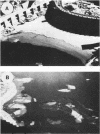Abstract
The response of the planktonic heterotrophic bacterial community to the buildup and breakdown of a semipermanent, crusted, floating cyanobacterial mat, or hyperscum, that covered 1 to 2 ha was studied in a hypertrophic lake (Hartbeespoort Dam, South Africa). The initial response of bacteria in the main basin to the release of dissolved organic carbon (DOC) from the hyperscum 1 km away was an increase in activity per cell from 35 × 10−12 to 153 × 10−12 μg of C cell−1 h−1 for total cell counts, while activity per cell for metabolically active cells increased from 19 × 10−11 to 85 × 10−11 μg of C cell−1 h−1. No major population growth occurred at this stage. Later, with the continuous supply of DOC from the hyperscum, total bacterial numbers increased from 6.6 × 106 to 20 × 106 cells ml−1, while the activity per cell declined. Metabolically active bacteria followed the same trend. Shorter-term DOC increases caused only increases in bacterial activity per cell. The data from Hartbeespoort Dam demonstrate an interesting and little-documented mechanism by which aquatic bacteria respond to increased DOC concentration and which may be universal for aquatic systems.
Full text
PDF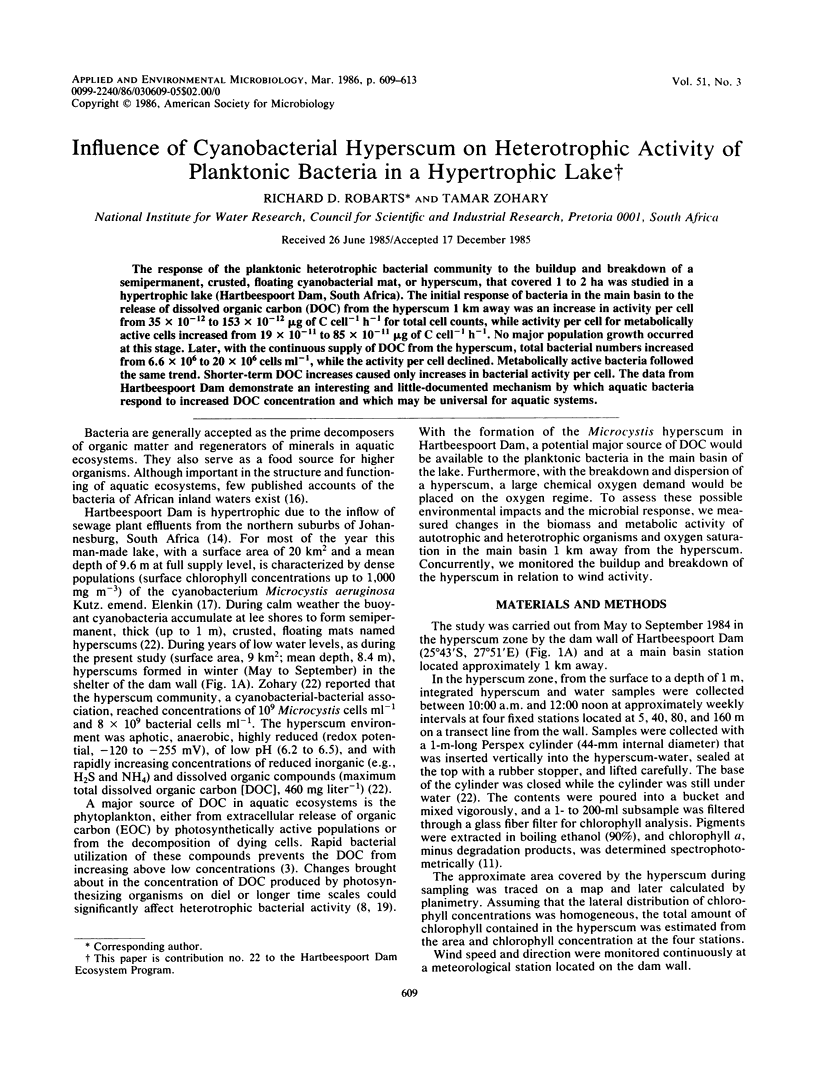
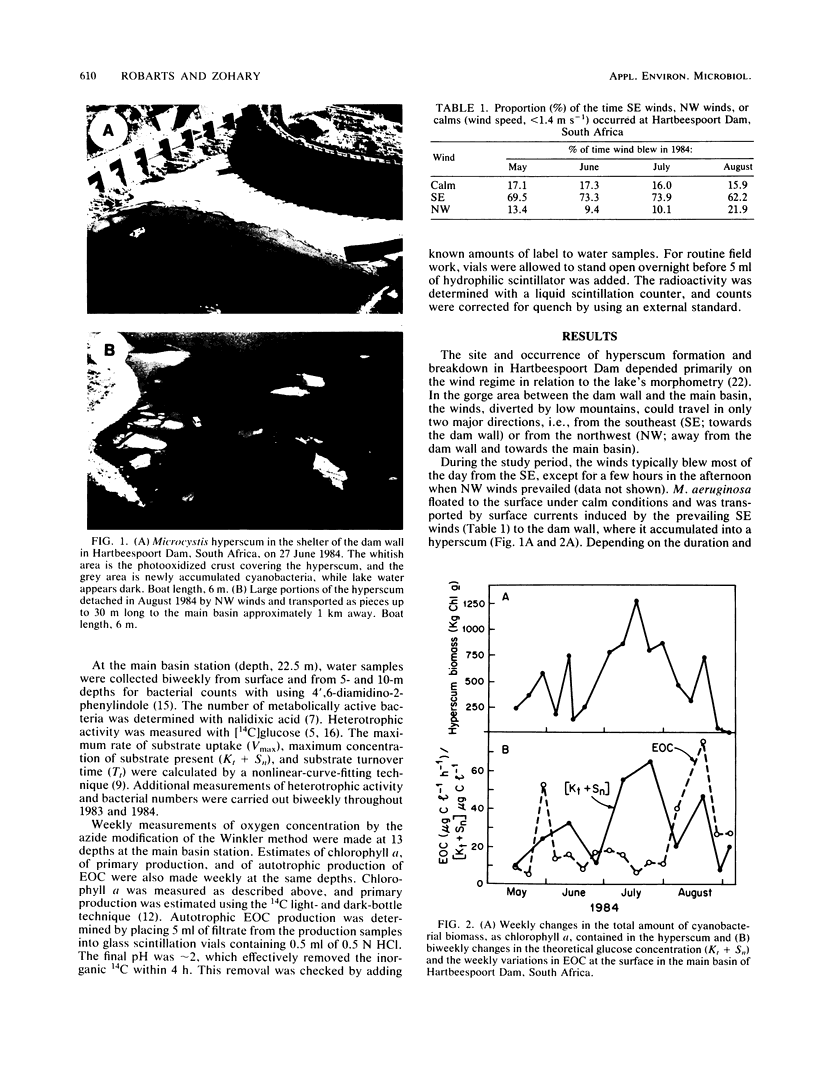
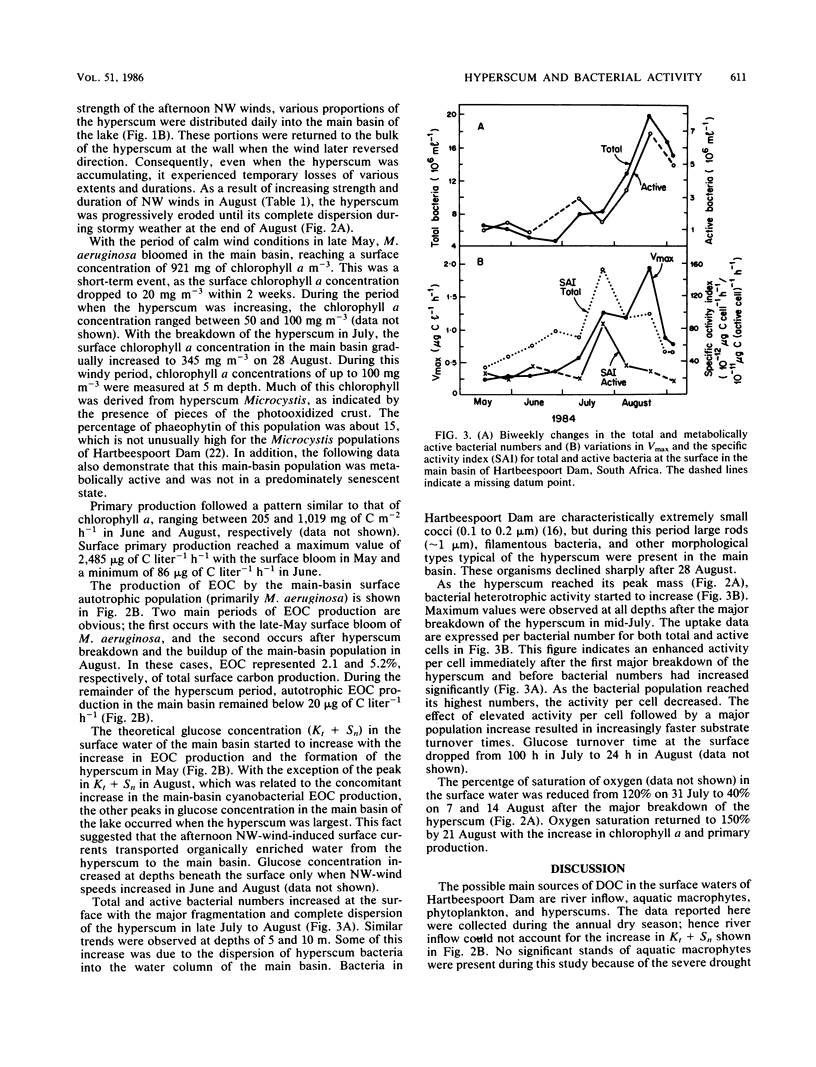
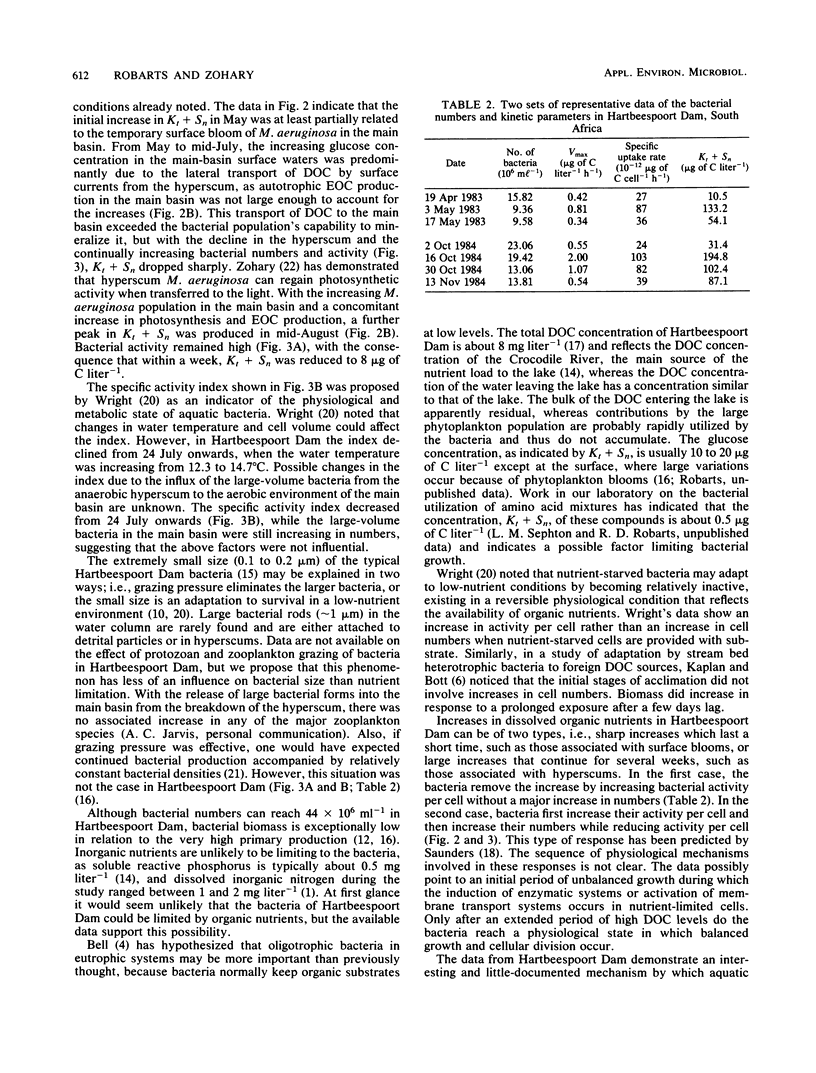
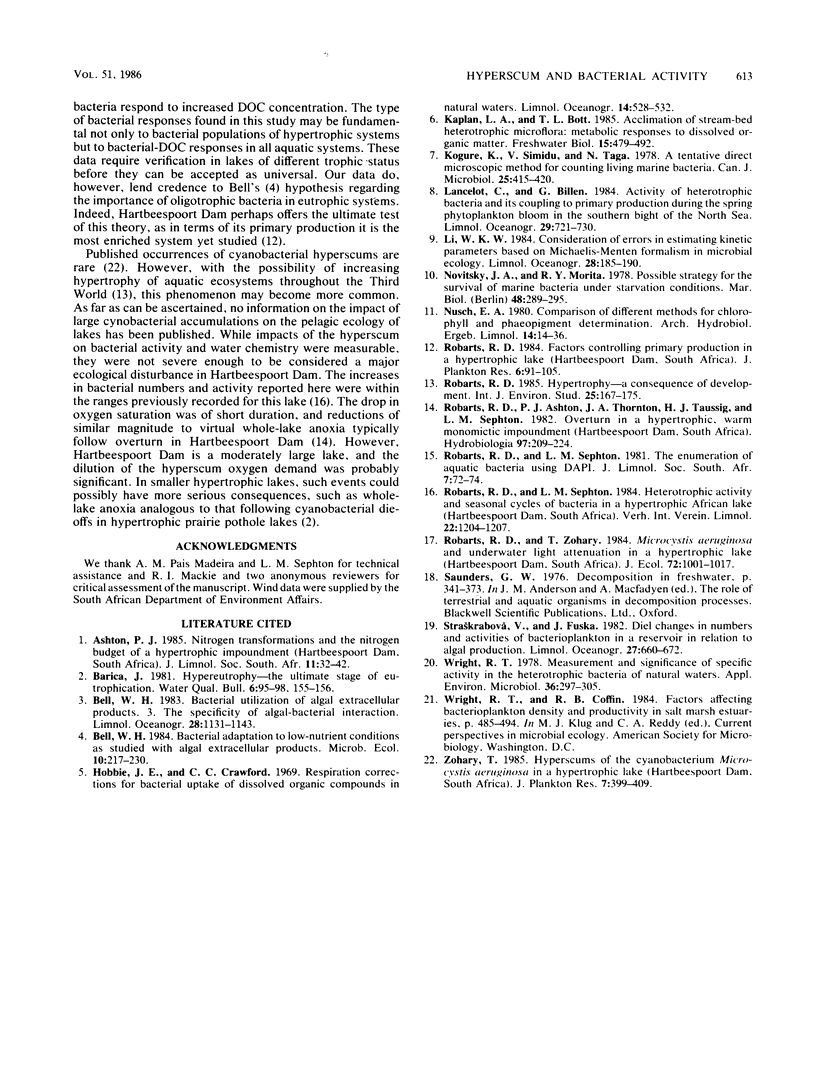
Images in this article
Selected References
These references are in PubMed. This may not be the complete list of references from this article.
- Kogure K., Simidu U., Taga N. A tentative direct microscopic method for counting living marine bacteria. Can J Microbiol. 1979 Mar;25(3):415–420. doi: 10.1139/m79-063. [DOI] [PubMed] [Google Scholar]
- Wright R. T. Measurement and significance of specific activity in the heterotrophic bacteria of natural waters. Appl Environ Microbiol. 1978 Aug;36(2):297–305. doi: 10.1128/aem.36.2.297-305.1978. [DOI] [PMC free article] [PubMed] [Google Scholar]



